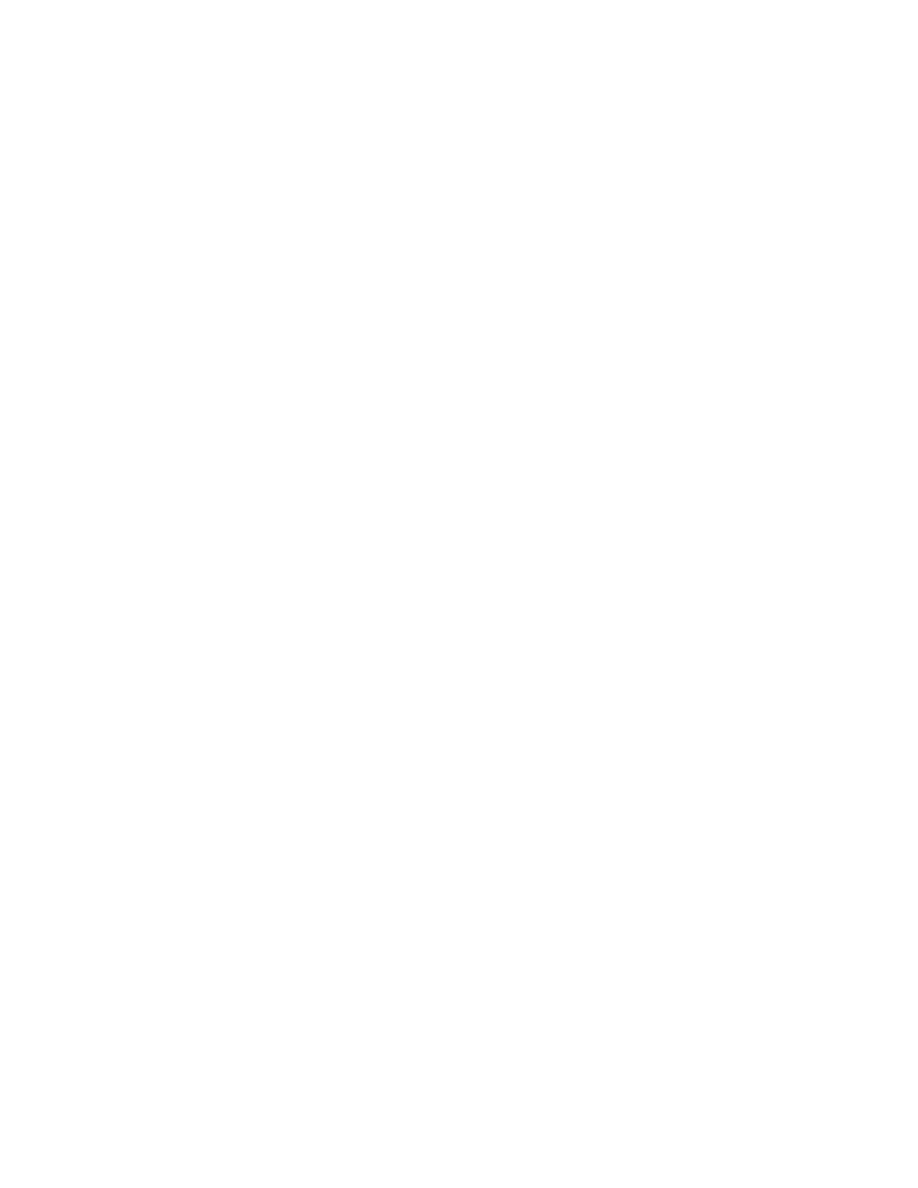
Section III. GENERAL MAINTENANCE
5-4. Painting
c. Masking. Mask all identification and instruction plates,
as well as all the machined surfaces of the structure frames.
a. General. All painted surfaces must be repainted
Be certain to mask the machined edge of the camera rail, the
whenever the existing paint is crinkled, cracked, or otherwise
inner lensboard frame, and the shutter. Provide masking
worn to the extent that rust is evident. When the equipment has
covers for all gears, drivescrews, and control shafts. Tape the
spots from which the protecting paint has disappeared,
counter drive chains and counterbalance chains.
Cover
although the rest of the painted surface is in satisfactory
openings of the drive motors and vacuum turbo-compressors to
condition, a touchup rather than a complete painting job will
insure that no paint is applied to these surfaces. Mask the
often suffice.
electrical wiring throughout the equipment. For additional
b.
Cleaning. The metal surface to be painted must
information on paint, refer to TM 9-213 and TB 740-97-2.
be free of rust, dirt, grease, kerosene, and alkali. Paints will not
adhere properly to rusty, greasy, or damp surfaces. All
surfaces must be dry. Remove rust and loose scaling, if any,
by wire brush, steel wool, abrasive cloth, or other suitable
means. Clean the surface with cleaning solvent and dry
thoroughly.
Section IV. REMOVAL AND INSTALLATION OF MAJOR COMPONENTS
AND AUXILIARIES
calibrations.
(Refer to squaring procedure before beginning
5-5. Calibration of Camera to Lens
calibration.)
a. The camera has been previously calibrated to the 19
a. Squaring Camera.
inch and 24 inch lenses and is provided with a set of focusing
charts for each lens, giving the distances of the lensboard and
(1) Squaring the camera consists of paralleling
copyboard for each reduction rate desired within the range of
the copyboard, lensboard, and vacuum back in the horizontal
the camera. The removal and disassembly of components
and vertical planes. Squareness can be checked by using the
affecting the counter reading of the lensboard and copyboard
master grid supplied with each camera. This grid is an exact
necessitates recalibrating the camera to the lens.
replica of the ground focusing glass grid. To check squareness,
mount the grid on the vacuum back, set the lensboard at 1 to 1,
b. The equivalent focal length, back focal length, and the
and observe the image on the ground glass. If the surfaces are
centering point separation are commonly known as the lens
not square, the grid image will not be in focus across the entire
characteristics which are required to calibrate the camera to the
focusing glass. When the camera is out-of-square, lack of
lens. No two lenses have the same characteristics. The lens
focus is greatest at an edge or corner; some part of the image
constant pertains to the optical center of the lens which consists
will be in focus to some point. This out-of-focus differs from
of two centering points, one a center for entering rays and the
when the camera is out of calibration; when the calibration is
other for the same exiting rays. The distance between the two
incorrect, the entire image will not be in focus; when the camera
nodes is called the nodal separation or the internodal distance
is not in square, at least one part of the image will be in focus.
of the lens. The equivalent focal length is defined as the
distance from the back node to the principal focus. The back
(2) To determine which plane (the copyboard,
focal length is known as the distance from the principal focus to
lensboard, or vacuum back) is not parallel, trammel the
the vertex of the back surface of the lens.
lensboard, to copyboard distance at the four farthest corners of
5-6. Calibrating Procedures
the lensboard. If all four readings are correct, the copyboard is
parallel. If a discrepancy exists, the lensboard to copyboard
Before beginning calibration of the camera to a new or
distance must be measured. This is done to determine if the
reconditioned lens, check the copyboard and lensboard carriage
discrepancy is in the lensboard to vacuum back distance, or the
to ascertain that they move snugly along the rail without rock or
lensboard to copyboard distance. Once it has been determined
play. Then trammel through from focusing glass to lensboard
which plane is not parallel, minor adjustments can be made to
back face, and from lensboard front face to copyboard face to
the vertical and horizontal mounts while observing the ground
make certain that all three planes are parallel to within 0.005
glass image until it is focused
inch.
When camera is square, proceed with camera
5-3


